2011/09/20 New fighter/bomber for FHSW 0.5
| DH.98 Mosquito FB. MK VI The de Havilland DH98 Mosquito was a multi-purpose aircraft during the Second World War from a British production. The twin-engined two-seater machine was designed by the de Havilland Aircraft Company manufactured in wood and with great success in the war and used afterwards. Between 1940 and 1950 over 7700 mosquitoes were built. Due to their high-speed flight characteristics and good height for the Mosquito, the German air defense was virtually unassailable. The machine was used except in Great Britain from the USA, Canada, Australia, China, New Zealand, South Africa, Czechoslovakia, Yugoslavia and Israel. 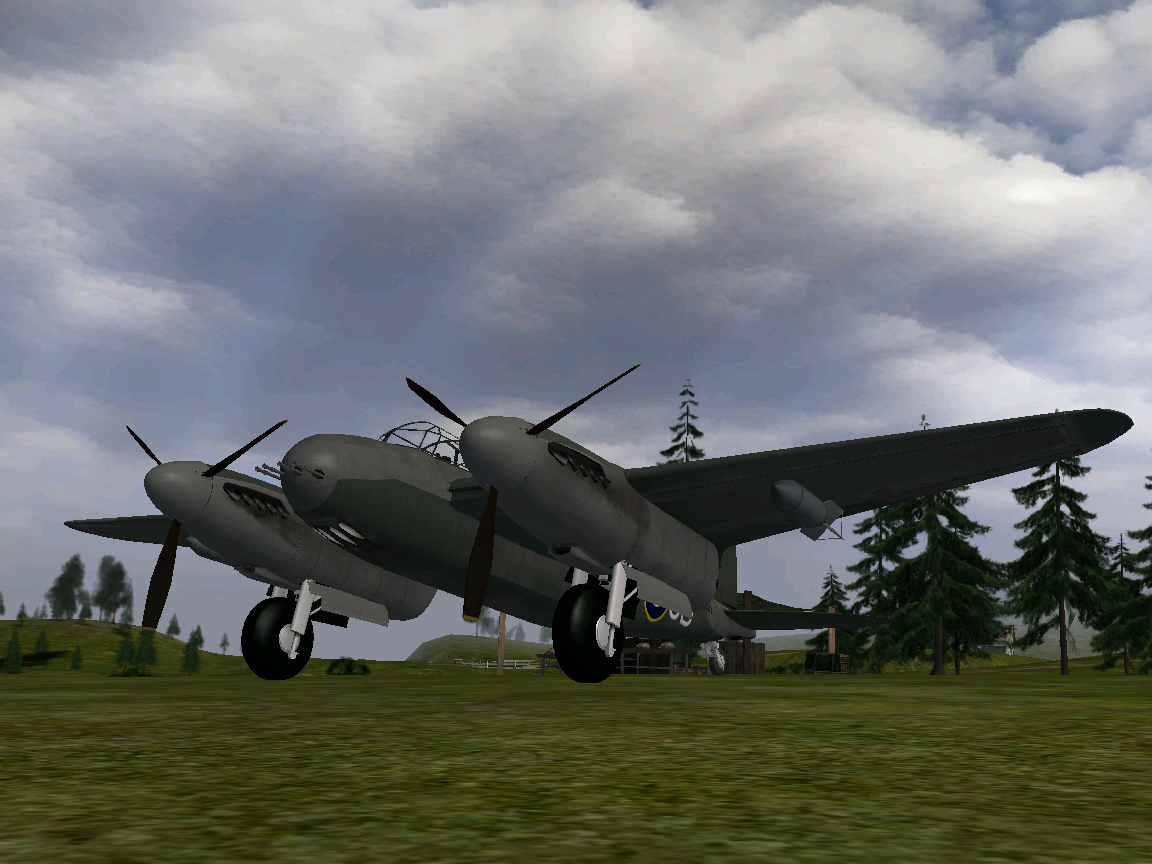 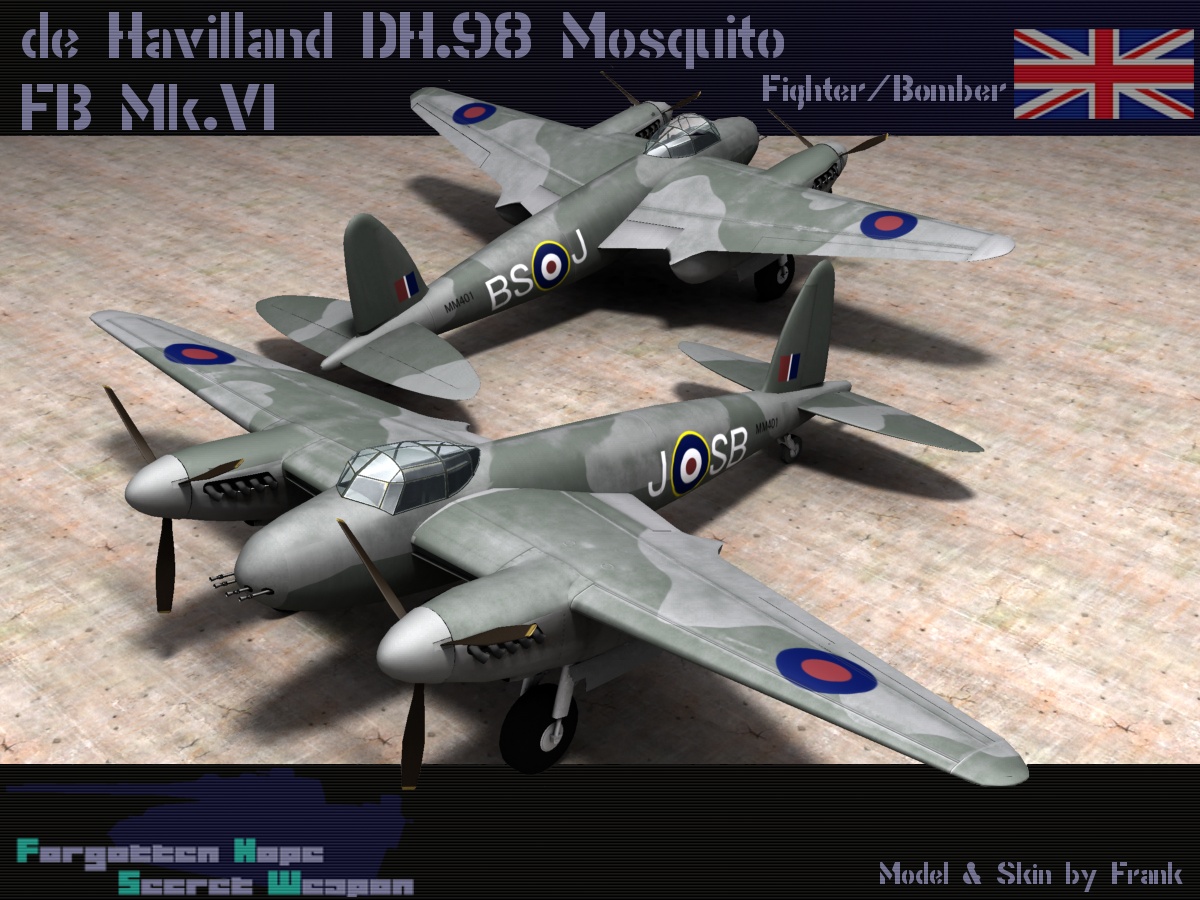 The aircraft consists mainly of plywood with an intermediate layer of balsa wood, which earned him the nickname "Wooden Wonder". The hull was composed of two halves that were provided just prior to assembly with complete control lines. The machine was powered by two Rolls-Royce Merlin engines with propellers rotating in the same direction. In the wing leading edge between the engine nacelle and fuselage were the cooler. When the bombers nose was glazed. In some versions, a "radar nose" set. 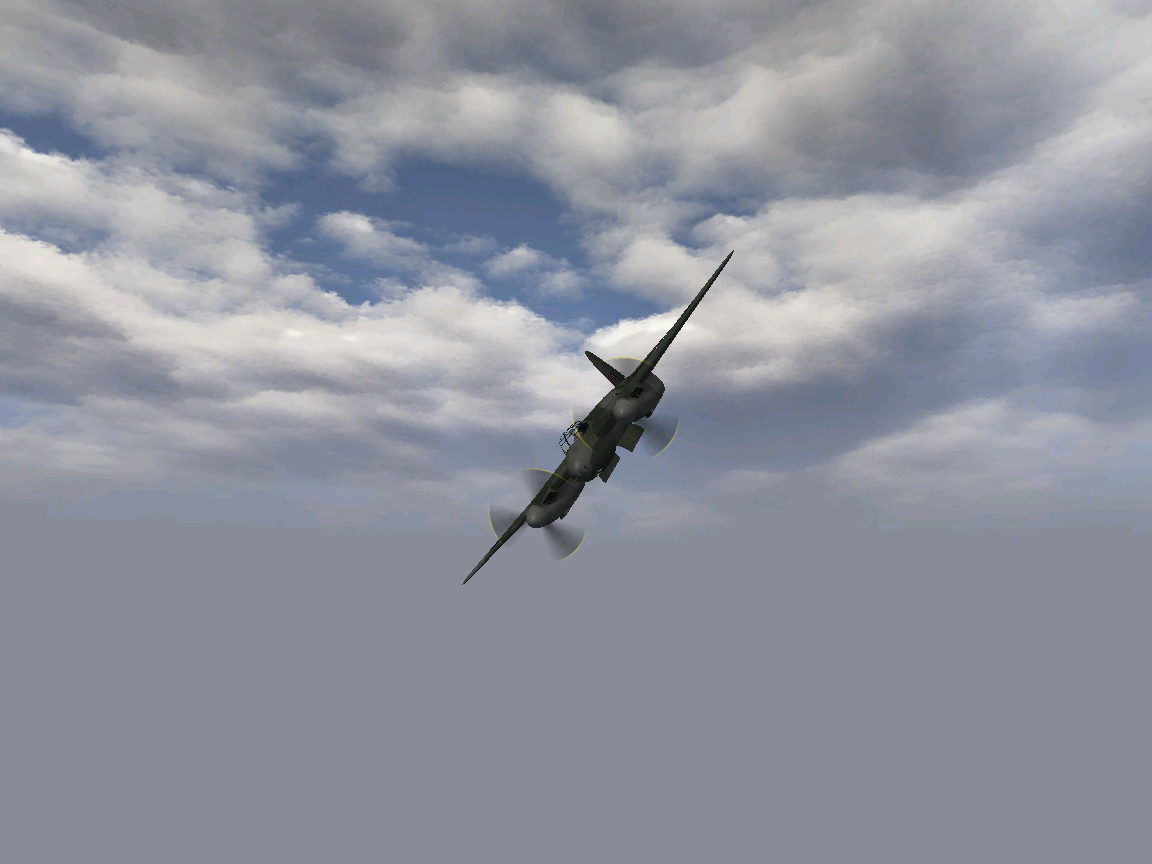  As early as 1938 began, a team led by RE Bishop with the construction of the proposed by Sir Geoffrey de Havilland concept under the name BI/40 specification. Due to the very high speed, the two Rolls-Royce Merlin engines gave the aircraft, it was initially planned as a fast bomber without additional weaponry. In anticipation of the coming war laminated wood was chosen as a building material in order to save other war-related resources. The British Air Ministry got the project because of this wood construction and lack of defensive armament very critical - up to Air Marshall Sir Wilfrid R. Freeman, who approved the draft and risked his reputation. One of the nicknames for the Mosquito was therefore also called "Freeman's Folly". When the war started, however, soon showed the advantage of this construction. On 1 March 1940 was awarded a first production order for 50 aircraft, but initially postponed due to the war developments. The first flight by the pilot Geoffrey de Havilland Jr. was only on 25 November 1940. The first flight tests exceeded a speed of over 630 km / h even the expectations of the manufacturer and could ultimately convince the representatives of the Air Ministry entirely on the performance of the aircraft. First, three variants were commissioned: the PR Mk.I as an unarmed reconnaissance (PR = Photo Reconnaissance), a bomber under the designation Mk B (B = bomber) and a night fighter, called NF Mk.II (NF = Night Fighter). Already the first operational use of the PR Mk.I on 14 July 1941 confirmed the assessment that is not a defensive weapon system for the reconnaissance was necessary - escaped the aircraft three Messerschmitt Bf 109, which is followed by simply flew straight at full speed until the Germans had to break off the pursuit. On 15 November 1941 was the first B of the 105th Mk.IV Squadron delivered, which began before Bristol Blenheim bomber. In early 1942, the B Mk.IV came into combat. It turned out along with the advantage of high speed and the robustness of the wooden structure to be advantageous. One of the first missions was the attack of four airplanes of the 105th Squadron on the Gestapo headquarters in Oslo on 25 September 1942. Soon there was talk in Germany of the "Mosquito plague"."Mosquito plague". 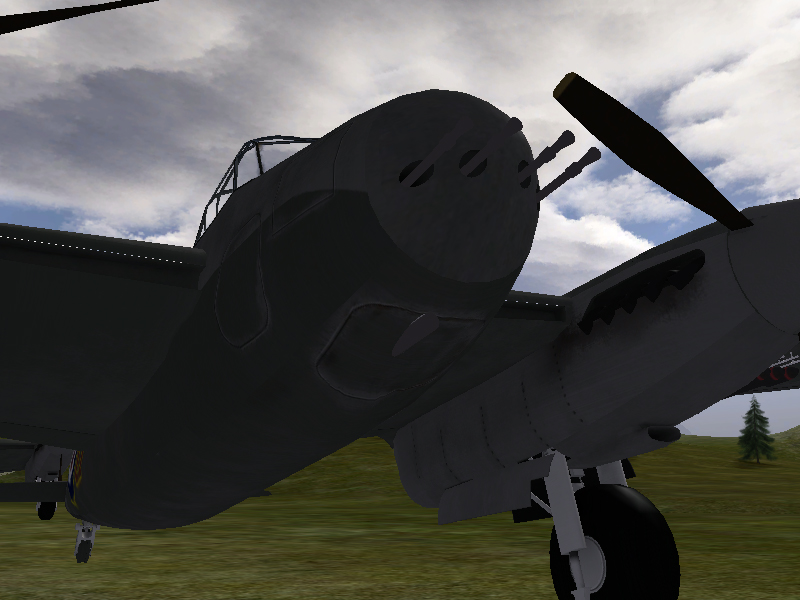 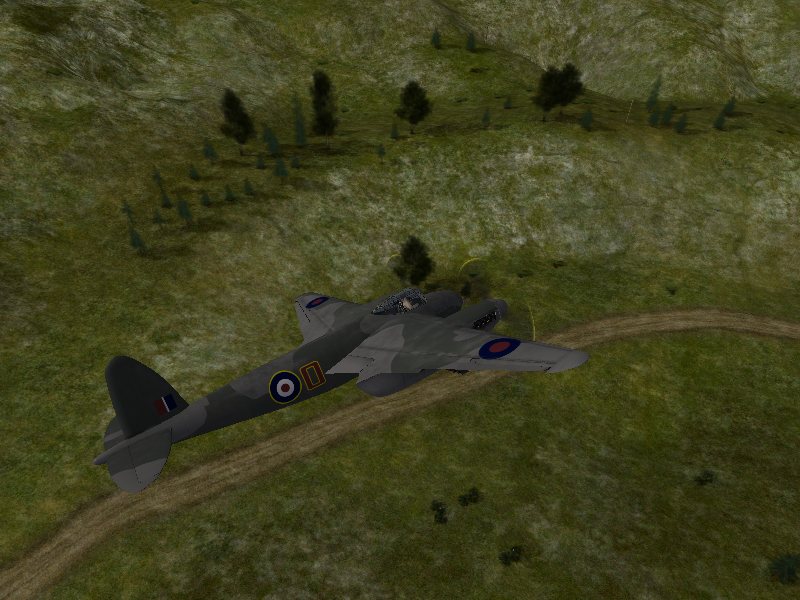 On the night of 30 to 31 December 1941 was also the NF Mk.II to their first use. It triggered soon its predecessor, the Beaufighter from, their speed, they almost 80 km / h outbid. Numerous other variations followed. Among other things, from February 1943, armed with cannons and machine guns, fighter-bombers Mk.VI FB (FB = Fighter Bomber), who also could carry eight missiles under the wings. This variant was also the most-produced 2718 pieces. Mk.IX was a high-bomber, the most produced bomber variant Mk.XIV with more than 1,200 copies. The Mosquito bomber had the lowest rate of loss of RAF bombers during the Second World War. 27 Mk.VI were to FB Mk.XVIII "tsetse" upgraded, which was used among other things, a Molins 57 mm cannon, a modified anti-tank gun, especially against ships. FB Mk.26 Mk.40 and FB were built based on the Mk.VI in Canada or Australia, with Packard Merlin engines (under license by Packard in the U.S. built Merlin engines) equipped. Ninety-seven NF Mk.II have been upgraded with an AI radar Mk.VIII NF Mk.XII. In addition, NF 270 Mk.XIII were rebuilt with the same equipment. Another night hunters were designated Mk.XV, Mk.XVII (converted from Mk.II), Mk.XIX and Mk.30. The latter carried the American Mk.X AI radar. The NF Mk.36 was with Merlin 113 engines and the NF Mk.38 with the British AI Mk.IX radar built after the Second World War. In the German Empire of Naxos was used ZR-radar detector-equipped to report the "H2S" centimeter-wave radar devices Mosquito night fighters. The British in turn used systems with the name or Serrate Perfectos to locate German night fighter. Due to the high speed needed the crews a while to get used to the machine. Therefore, a training version of the aircraft was built, the T Mk.III. The Australian variant of this type had the designation T Mk.43. There were also built 50 TR Mk.33 for use on aircraft carriers. These were the top-folding wings, a radome and mounting brackets for torpedoes. Other types included the use of a fast bomber, fighter escort, attack aircraft, transport aircraft, minelayer and target tug. The Royal AF continued this target tugs until the late 40s on their base in the north of the island of Sylt. The wooden construction in tropical regions, however, proved to be problematic, since the wing spar, under these conditions sometimes gave way and broke. When transferring flights from Canada to Europe, there were also unexpected problems: some aircraft from exploding until now unknown reasons in the middle of the Atlantic. The last Mosquito - an NF Mk.38 was built in 1950 in Chester. Some "Mossie" remained long after the Second World War in action. In Great Britain the previous reconnaissance were taken out of service until 1961. During the 6710 war planes were built. A total of 7781 aircraft were built, including 1134 in Canada and 212 in Australia. | |
|
| |
| Views: 30244 | Comments: 3 | |
| Total comments: 3 | ||||
| ||||